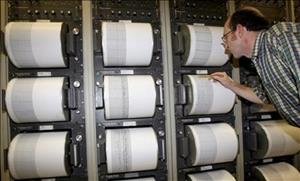Christmas Day 1884: The Day Andalucía Shook
Christmas day 1884 began like all Christmas days, slowly. Most of the population of Andalucía were recovering from the excesses of the night before. The traditional Nochebuena feast of seasonal Sea Bream and roast Lamb had taken its toll. Liberal quantities of champanada cider and local wines had also helped the festivities. While anise flavoured polvorones, mazapanes, and almond-honey turrones sated the sweet tooth.
Children were beginning to enjoy themselves. The promise of gifts on January the 5th and the spectacle of the processions of Los Reyes heightened their excitement. As the day progressed so did the expectation of the festivities to come. The tranquillity of the evening was soon to be betrayed by the massive subterranean forces building in the earth below.

At eight minutes past nine that evening the Ventas de Zafarraya Fault vibrated for approximately 20 seconds. This set in motion the most destructive earthquake in the history of Andalucía. The epicentre was south of the central Sierra de Tejeda region and caused casualties and damage over an area of almost 6400 Km2.
The African tectonic plate impacting on the European plate causes the seismic activity inherent in southern Spain. Over the last 2000 years earthquakes and tremors from Cadíz to Alicante are documented in one form or another. In 1994 an event of magnitude 5.6 occurred, causing walls to crack and minor damage to fixtures and fittings.
The Great Andalucían Earthquake of 1884 struck on possibly the quietest day of the year. Spanish society was renewing the bond of family. The hard work and sacrifice of the year forgotten as the generations became as one. The moving earth and falling masonry must have seemed personal. An inroad into the very fabric of the family orientated society which is essentially Spain.
El Defensor de Granada of the 29th was the first to print a report of the disaster. Poor communications and the remoteness of the affected villages had delayed word getting out. Even after the Defensor carried the story the nationals in Madrid put the reports down to typical Andalucían exaggeration. They didn’t dispatch correspondents until the 8th of January.
Meanwhile those made homeless, injured and traumatised by the earthquake were thrown back on local resources. The winter of 1884 was one of the harshest on record, the cold compounded by heavy snowfalls. Many of the fatalities must have succumbed to the elements. The first outside aid that reached the survivors was from a fund set up by the editor of El Defensor de Granada.
The outside world eventually became aware of the scale of the disaster and many magazines and journals began relief funds. The Ilustrierte Welt, L’Illustration Journal, Universal and La Illustración Española y Americana, carried graphic images of ruined towns and gaping fissures. The Biblioteca Nacional in Madrid has these and many other imaged in their archives.
The village of Albuñuelas suffered major damage, with almost 200 fatalities and 500 injuries from a total population 1640. The destructive effects of shaking, plus the deluges of mud caused through liquefaction of the waterlogged soil made the village uninhabitable.
Haunting images show people searching for loved ones in the ruins of Alhama, while wild pigs feed off unearthed corpses. The population forced to camp in open fields, with minimal cover against the harshest of winters.
Near Zafarraya huge fissures opened, while as far west as Málaga with extensive damage caused in the Plaza de la Victoria. Elsewhere in the city many buildings required buttressing. Gelhada was extensively damaged as was Canillas de Albaida and Cómpeta. All the towns and villages from the Sierra Tejeda to the sea suffered to varying degrees. In Periana, north west of the Sierra Tejeda 57 deaths were reported. Perhaps the most pungent lithographs in the archives of the Biblioteca Nacional depict a procession of bedraggled and demoralized villagers. They carry religious images saved from the ruined pueblos, images with no home.
The number of reported casualties varied from 750 to 900 dead, while more than 1800 injured is an accepted figure. The total of 14,000 homes destroyed underlines the scale of the desolation. Help on a national scale did arrive, first from Córdoba and then Seville. The construction of wooden cabins for the people of Albuñuelas began. In April 1885 an international relief fund became established and together with the national effort raised some 6,455,985 Pesetas with a Euro equivalent of 38,801.
The houses of Moorish construction fared better than their more modern counterparts. This was due partly to the construction methods and partly because the Moors knew which terrain best suited which type of construction. The Moorish builders of the Alhambra in Granada had used lead between its joints to absorb movement. A more general method was to use two outer walls of stone with a soft lime mortar infill, the walls tapering as they rise.
Some lessons were learnt from the earthquake of December 1884. No houses in the reconstruction consisted of more than two stories and not more than nine and a half metres in height. All streets being 10 metres wide, there were some exceptions however, as in Albuñuelas where stable land was scarce, here the street width was six metres.
The present building boom east to Almería is disconcerting, these dwellings will have to withstand earth tremors. Dwellings built to withstand seismic disturbance, are feasible. First commercially advertised in 2004 but not popular with builders as they can be realised cheaper than most conventional dwellings. Like all nations the only lesson we have learnt is the one of economics. There must be something more we can do. We must make certain that the next time our Christmas Day is rudely interrupted, the event will be an anomaly rather than a catastrophe.
The next ´big one´ may not occur for another 120 years. It could, however, happen tomorrow.
John MacDonald www.caratacus.eu
